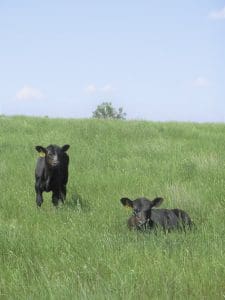Canadian Locations May Be In Peril
By Will Verboven, Contributing Editor
The COVID-19 outbreak has spotlighted the operations of Alberta’s two giant beef-processing plants and their large and vulnerable labor force. Shoulder-to-shoulder workers are the rule in such plants, which has not changed much over the past 100 years. That’s not unique to Canadian plants; it’s the reality for most big meat processing operations across North America. But, compared to other food-processing sectors, many of whom have embraced extensive automation and reduced labor requirements, beef processing seems somewhat outdated. That’s not to say modernization hasn’t occurred in big meat plants; it has, but one wonders if it could progress a lot more. Perhaps large commercial meat processing in North America is restrained by the perspective that it’s a mature industry hampered by perceived technological and job-related constraints.
The popular view is because such plants are processing variably sized meat products – robotics and other forms of automation are challenging to utilize in the plant production line. But advances in sensor devices are making meat-processing technology more flexible in dealing with carcass and product variability. I cite a highly automated pork plant built by Danish Crown, the largest pork processor in Europe. It utilizes extensive automation and robotics to reduce high Danish labor costs. The plant processes up to 15,000 hogs per day. Is there a message here for the meatpacking industry in North America? Maybe high-tech automation and robotics work.
Cargill and JBS, owners of the big Canadian plants, are two of the largest meat-processing companies in the world, and I expect they have been researching processing efficiencies and automation extensively. The question is, why have they not built highly automated robotic beef plants? Is it because beef processing can’t be automated like pork? Or perhaps it’s just a matter of economics; labor may just be cheaper in North America than in Denmark, so why bother with costly robotics? However, both Canadian beef plants are more than 25 years old; one suspects they may be coming to the end of their useful lives despite continuous modernization.
The question for the Canadian beef industry is – are there corporate plans for the future existence of those plants up here in the great, cold, white north? Are there corporate strategies to consolidate and build automated robotic plants in the U.S.? Is there even a need to have a big plant in Canada when cattle can be transported a thousand miles to a new plant in the United States? Alberta feedlots have a long history of trucking fed cattle as far away as Colorado – so it can be done. It would make sense from an economy of scale perspective for a new U.S. plant. The downside is the economic repercussions of closing either plant and the loss of 4,000 jobs. But there is a worrying precedent – the two big Alberta beef plants, when originally established, were instrumental in the closing of many medium-sized meat-processing plants and the loss of jobs across Canada. Could any massive new U.S.-based plants built by the same companies cause the closure of either of their Canadian plants? I would suggest that history has a habit of repeating itself.
Thirty years ago, the Alberta government provided tax and development incentives for both plants to be built or expanded. Cargill received a grant of $5 million to lure it into building in High River, Alberta. Considering the billions of dollars in taxes and beef industry revenue that plant has generated, it was one of the most profitable investments the Alberta government ever made. What may be needed again are new incentives to build giant new automated robotic processing plants to replace the existing aging facilities. Such high-tech plants could be a North American first in beef processing. Considering some of the fallout from the pandemic, building new plants that use a much-reduced workforce with much less worker interaction would be opportune.
One suspects other jurisdictions in the United States are trying to attract such new plant development with financial incentives. And it isn’t just about advantageous tax and regulatory considerations either; its also labor costs and union attitudes. The reality is, a company faced with a hostile, antagonistic union local probably does not look favorably upon that location for future investment. For example, the United Food and Commercial Workers Union local branch is suing Cargill for alleged shortcomings in its pandemic response at its Alberta plant. One of the unintended consequences of union agitation and belligerence is biting the hand that feeds you. Both Cargill and JBS could decide to build a new facility in more labor-friendly places like Montana or Idaho. As hard as it would be to do, the Alberta cattle industry would somehow adjust to such a new reality.
One hopes the Alberta government has been in discussion with both companies as to their future intentions in this province. Hopefully, our government is ready to offer incentives to build new automated, robotic processing plants to replace existing aging facilities up here in Canada. The last thing Alberta needs is the closure of either big plant and the economic devastation to the Canadian cattle and beef industry. History needs to repeat itself, but in a positive way.





